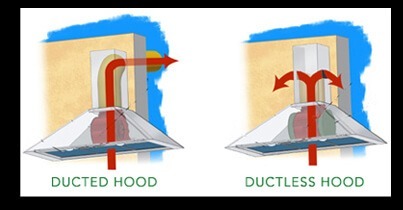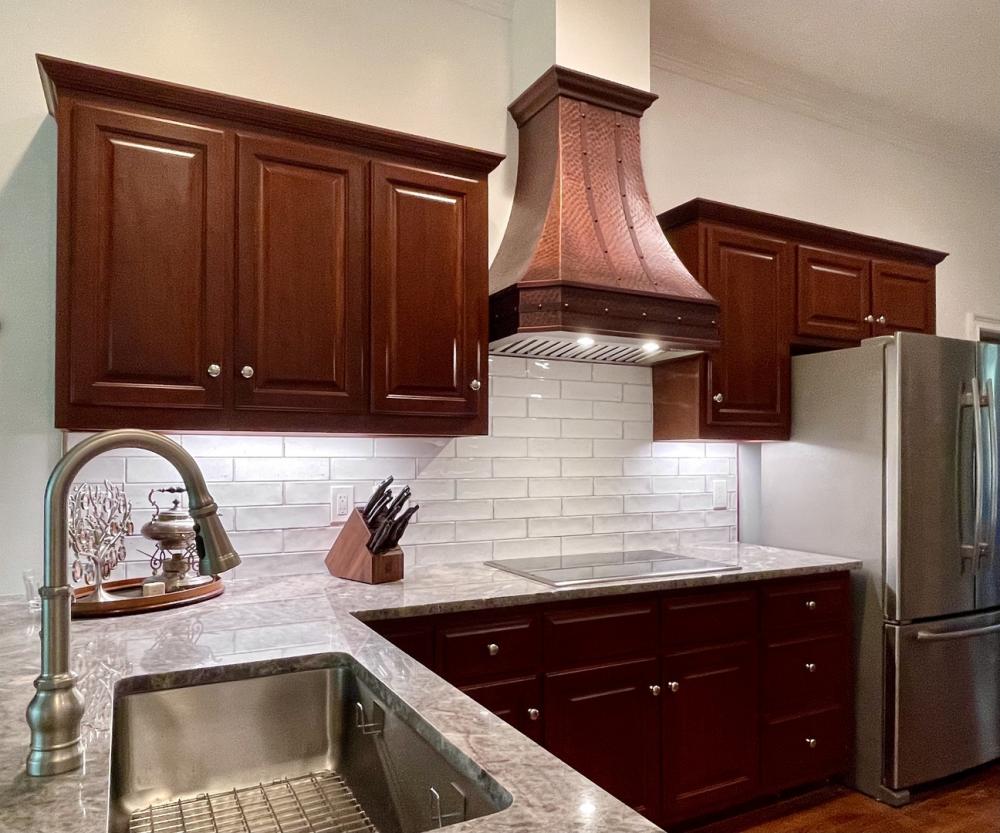A range hood helps protect the air quality in your home. All varieties of hood filter harmful airborne particulates and noxious gases.
One of the most important decisions you make when purchasing a ventilation system is the choice between a vented hood or a ventless hood.
What is the difference between vented and non-vented range hoods?
The difference here is all in the final destination of your kitchen exhaust.
Ducted range hoods
A ducted range hood (also called vented) purifies your kitchen air by completely removing the exhaust from your home.

A ducted hood is connected to ductwork in your wall or ceiling which will lead to a point of exit on the exterior of your home either through your walls or your roof. The insert fan pulls polluted air through stainless steel baffle filters and releases it finally outdoors.
Ductless range hoods
A ductless range hood, on the other hand, filters your kitchen air completely in-unit, with no need to vent the exhaust all the way outside.
Utilizing heavy-duty charcoal filters, our ductless hoods purify your kitchen air without additional ductwork.
Are non-vented range hoods worth it?
Unvented range hoods are just as effective at purifying your kitchen's air as ducted hoods, so be assured you'll experience the same high level of ventilation.
The primary user difference between these varieties of hoods is that, since the hot and sometimes humid air from cooking isn't fully removed by an unvented range hood, heat is better dissipated by a vented hood. If heat minimization is important to your ventilation goals, then you may want to opt for a ducted hood.
Do electric ranges need to be vented?
A common misconception has it that electric ranges don't produce the gases and airborne particulates that are filtered by range hoods.
In fact, while the stove may not release gas, the food you are cooking still does and still ought to be filtered. And your microwave fans, while offering a paltry bit of airflow, are not strictly range hoods and do not substitute for the real thing.
What type of range hood should I get?
This is a highly individual question, and one that our customer service is happy to help you with. Firstly, the location of your stove or range will determine the placement on your hood.

For open wall above the stove, you should get a wall-mount range hood (sometimes called a wall chimney hood).
For cabinetry above the stove, you should get an under-cabinet range hood.
For island ranges, an island range hood is the correct choice.
Customizations
After you've determined the location of your hood, you can customize the materials, details, and finish for a unique look that perfectly complements your kitchen aesthetic.
CFM and ventilation style
You'll also select the cubic feet per minute rating of your insert fan, which is a measure of the fan's power. At this point, you'll decide between vented or non-vented.
A ductless non-vented hood will cost less to install. Because the fan must be in the hood itself (as opposed to a ducted hood where the fan can be placed within the ductwork), ductless hoods are louder. If you're looking for a quiet range hood, you may want a ducted hood.
What does it mean when a range hood is convertible?
Convertible hoods can function either ducted or ductless. With CopperSmith's Ductless Conversion Kit, easily configure your ducted hood to ductless capability.
